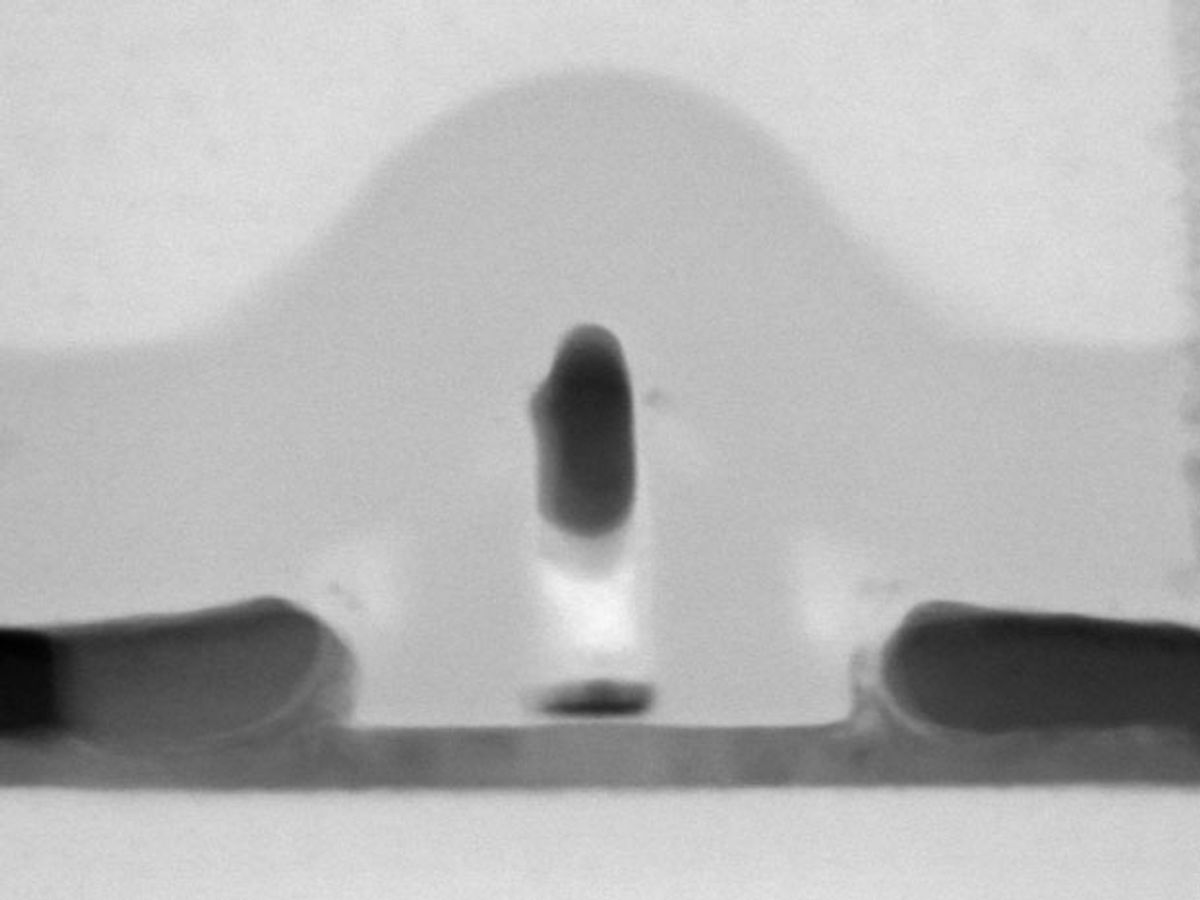Future quantum computers might not be all that different from the one you’re using now. An international team of researchers have created a the most fundamental part of a quantum computer—the quantum bit, or qubit—using only a CMOS transistor that is not much different from those in today’s microprocessors.
Trying to keep Moore’s Law going, manufacturers continue to shrink transistors as small as possible. But these efforts are limited by quantum effects that often appear in very small electronic devices, inhibiting their normal functioning. These otherwise-undesired effects might be a boon for quantum computers. In research detailed in ACS Nano Letters scientists show how CMOS transistors, using state-of-the-art production technologies, can be made small enough to function as a qubit, that is, they can assume either of two quantum states and or a mix of both at once—a state called superposition.
“We wanted to show that the same technology that is used for our computers can be used for quantum computing experiments,” says M. Fernando Gonzalez-Zalba, at the Hitachi Cambridge Laboratory in Cambridge, UK. Gonzalez-Zalba headed a group also comprising researchers from Japan, France, and Ukraine involved in a European Commission funded project called TOLOP (towards low power information and communication technologies).
Their approach, which consists of controlling and reading out the quantum state of the CMOS qubit via the transistor’s gate, may substantially simplify recently reported designs of other silicon-based qubits.
In their experiment the researchers obtained CMOS transistors with a gate that surrounds the channel from three sides, forming two corners with right angles. (The channel looks a bit like an elongated rectangular nanowire laying horizontal to the plane of the silicon, the gate is deposited over its middle.) The gate’s electric field at these corners is stronger than at other points on the nanowire, allowing the corners to function as electrostatic quantum traps (quantum dots), explains Gonzalez-Zalba. At a temperature below 20 Kelvin, one can isolate a single electron that can move between these two quantum dots by tunneling. Depending on how the electron is “distributed” between those two corners, you can have two different quantum states that we can use as the “one” and the “zero” of the quantum bit. However, the trapped electron can also be brought in any superposition of these two states by a fast voltage pulse at the gate. This quantum state is called coherence, and can last up to 100 picoseconds, says Gonzalez-Zalba.
The gate also allows the reading out of the quantum state of the electron in the channel. For this the researchers connected it to an L-C circuit tuned to a frequency of 350 MHz. When the electron is in one or the other corner, or in a superposition state, the capacitance of the two quantum dots changes slightly, which causes a tiny detuning of the 350 MHz oscillator.
The coherence time—the time a qubit can store data—is now 100 picoseconds, and the researchers expect to be able to increase it to one nanosecond. This should be long enough to perform important operations, such as error correction.
Such operations require that two or more qubits become entangled, linked in such a way that measurements taken of one qubit instantly affect the other. Entanglement would be possible if two identical transistors are placed together close enough, or are in the same silicon nanowire, so that there is an electrostatic coupling between the two electrons.
“If you perform an operation on one electron, it will also affect the quantum state of the other electron in a separate transistor,” says Gonzalez-Zalba. Of course, such an experiment is on the books. “These two-qubit interactions will complete the whole set of elements that are required for a quantum computer,” he says.



